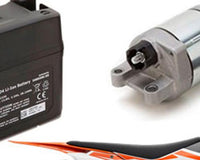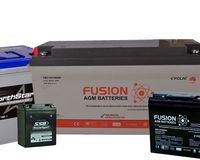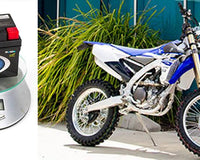Table of Contents
Energizer Lithium batteries are long-lasting batteries that provide serious power for all your critical devices. The batteries differ from regularly used alkaline batteries in chemistry and construction.
Lithium batteries are superior in chemistry as they comprise less than one gram of super active and light lithium (Li) material for the anode and iron disulphide (FeS2) material for the cathode.
Lithium is a premium material due to its high conductivity and low electrode potential, producing high energy density batteries. The chemical reaction between lithium and iron disulphide produces a lithium iron disulphide (LiFeS2) battery with a minimum voltage of 1.5 volts. Because lithium reacts with water, the electrodes are dipped in a non-aqueous electrolyte made from lithium salt dissolved in an organic solvent.
The LiFeS2 battery features a spiral construction or jelly roll shape that results from rolling the two thin and long electrodes. A design like this provides about 20 times the more interfacial surface area and 30% less battery weight when compared to standard alkaline batteries.
An Energizer Ultimate Lithium battery cell weighs about 15 grams and has a total volume of 8 cubic centimeters.
The Suitable Applications For Energizer Lithium Batteries
Put these high power batteries to various uses, from powering smart home devices to indoor and outdoor play or hobby activities. Because they provide longer-lasting power, they’re also a reliable option when powering work gadgets.
The batteries come in two sizes: AA and AAA, allowing you to use them in a wider selection of devices. Both sizes provide you with ultimate performance in high drain devices while ensuring you use fewer batteries and reduce battery waste.
| PLAY | WORK | HOME |
| Game controllers | Wireless mouse | Digital cameras |
| Handheld games | Stud finders | Smart locks |
| Handheld GPS devices | Laser levels | Security cameras |
| Flashlights | LED lighting | Wireless thermostats |
| Screen reader | Remote-controlled devices | |
| Wireless doorbells |
The Superiority of the Energizer Ultimate Lithium Battery
These LiFeS2 stand out for a variety of reasons.
World’s Longest Lasting Battery
Battery capacity refers to the duration that a battery can provide service at a specific drain rate and cut-off voltage. The drain rate refers to how fast or slowly a battery discharges. The cut-off voltage is the point at which a battery is fully discharged, going beyond this point may cause harm.
The capacity of LiFeS2 batteries varies due to the jelly construction that features multiple layers of active materials. However, it’s less sensitive to the drain rate and voltage cut.
For instance, the capacity of an AA Energizer Ultimate Lithium battery being discharged at 100 mAh to a 0.8-volt cut-off can be calculated by multiplying the drain rate by the hours needed to reach the cut-off voltage. Let’s say it runs for 36 hours; then, the battery is said to have a capacity of (100 mAh x 36 hours) = 3600 mAh if it drains at that rate to the 0.8 cut-off voltage.
Most batteries have a voltage cutoff of 0.8 volts per battery to make the most use of the available battery capacity. Energizer AA lithium batteries are different; they allow you to discharge up to 0.5 volts when used in high-drain devices.
The Energizer Ultimate Lithium AA batteries are the world's longest-lasting batteries as they can hold a charge for up to 6 times more than other leading brands. You can count on these AA and AAA batteries to hold at least 95% of their initial power up to 20 years in storage.
Superior Performance in Extreme Temperatures
You can depend on your Energizer Ultimate Lithium batteries in all seasons, thanks to their low-temperature sensitivity. They perform optimally between -40℃ and 60℃ (-104℉ and 140℉) and hold power when stored at the same temperatures.
Although chemical reactions for most batteries are slower at temperatures below room temperature, you can expect LiFeS2 batteries to deliver optimally at temperatures as low as -40℃.
How? LiFeS2 batteries have a larger surface area and use a non-aqueous electrolyte, which increases the conductivity of the batteries as temperatures drop.
On the contrary, warmer temperatures boost the performance of LiFeS2 batteries in high-tech devices. Typically, higher temperatures increase the chemical reactions and storage capacity of a battery.
According to Scientific reports, a 36℉ increase in temperatures can cause a 20% increase in a lithium battery's maximum storage capacity. As a result, the battery delivers greater performance in the short term, but it reduces its overall lifecycle significantly.
It's essential to avoid prolonged heat exposure to prevent battery degradation.
Efficient Safety Features and Quality Checks
The Energizer Lithium AA and AAA batteries incorporate multiple safety features to prevent adverse conditions, such as overheating, short-circuiting, and forced discharge. The two primary safety devices in these batteries are:
Resettable Thermal Switch: Also known as the Positive Thermal Coefficient (PTC). It limits the current when the PTC temperatures exceed 85℃. Doing so allows the battery to cool below the activation temperature and restores battery resistance to regular levels.
Pressure Relief Vent: Protects the batteries against exploding in case of exposure to adverse conditions, such as internal short-circuiting. It does this by allowing controlled pressure release, limiting the current a battery can carry, and stopping additional heat generation.
Additional safety considerations when using the world's longest-lasting AA and AAA batteries:
- Don’t pot or encapsulate an Energizer AA or AAA Lithium battery because this interferes with the effectiveness of the pressure relief vent.
- To avoid personal injury, avoid exposing a LiFeS2 cell to fire, water, or heat above 100℃. Don’t open, install backwards, recharge, or mix with a different battery type.
- Never charge a lithium battery not designed to be recharged.
Guaranteed Leakage Protection
Due to the advanced technology used in the design and construction of the battery, Energizer Ultimate Lithium batteries are entirely leak-proof under proper customer use.
As a guarantee, Energizer promises to replace or repair any devices destroyed by battery leakage. Here's what you need to know if you want to receive a replacement or warrant a repair due to battery leakage.
- Send the battery and damaged device to Energizer as proof of claim.
- Energizer may deny claims if it’s evident that the battery or device was either modified or misused.
- When repairs aren’t possible, and an exact replacement isn’t available, you’ll receive a device of comparable market value.
Although these batteries are leak-proof, you should expect some electrolyte odour when used or stored under high temperatures. The odour results from the transmission of ethers through the battery seal but contains a very low amount of vapour.
Additionally, the potential exposure of the odours is below the time-weighted average limit stipulated by typical industry standards, including the American Conference of Governmental Industrial Hygienists (ACGIH).
Frequently Asked Questions
Which Battery Is Better Alkaline or Lithium?
The table below clearly shows the superiority of lithium over alkaline.
| CHARACTERISTICS | LITHIUM BATTERIES | ALKALINE BATTERIES |
| Cold Temp Performance | Superior | Good |
| Weight | 33% less than alkaline | 33% more than lithium |
| Shelf Life | 20 + years | 5 to 10 years |
| Leakage Resistance | Superior | Good |
| Discharge Curve | Flat | Sloping |
| High Rate Capability | Superior | Good |
How Long Do Energizer Lithium Batteries Last?
Energizer Ultimate Lithium batteries can last up to 6 times longer than other batteries. Not forgetting, they hold power for up to 20 years in ambient storage.
Can I Recharge Energizer Ultimate Lithium Batteries?
No. Energizer Ultimate Lithium batteries aren’t rechargeable. However, they provide you with excellent value for your money by being the world's longest-lasting AA and AAA batteries.
Even better, they’re as kind as rechargeable batteries for the environment because their long-lasting power allows you to go through fewer batteries in high tech devices, thus producing less waste.










